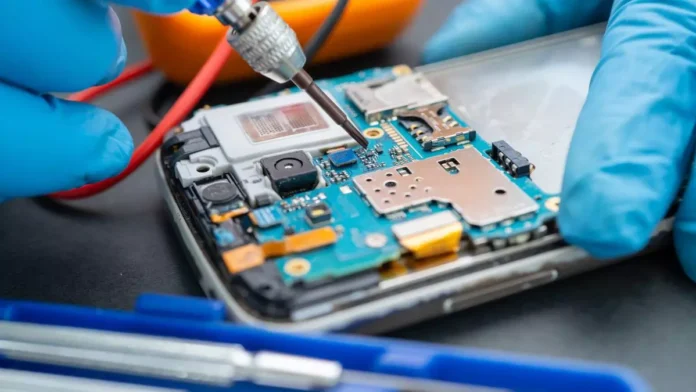In a significant policy shift, the Indian government has announced a reduction in import duties on mobile phone parts to 10%, with the primary objective of catalyzing local production and driving electronic exports. The move is part of a broader strategy to enhance the competitiveness of the mobile manufacturing sector, fostering economic growth and creating employment opportunities.
The decision comes at a crucial juncture as the global electronics market experiences rapid transformations and disruptions. Recognizing the need to adapt to these changes, the Indian Cellular and Electronics Association (ICEA) has hailed the reduction in import duties as a critical policy intervention to support the industry’s growth.
The Production-Linked Incentive (PLI) Scheme, a cornerstone of the government’s strategy, has played a pivotal role in making mobiles account for over 52% of electronics exports. This statistic underscores a noteworthy shift from the traditional approach of import substitution to a more export-oriented growth model.
The decision to lower import duties on mobile phone parts is expected to have a multi-faceted impact on the Indian electronics industry. By incentivizing local production, the government aims to reduce dependency on imports and create a self-reliant ecosystem. This move aligns with the broader vision of the “Make in India” initiative, which seeks to transform the country into a global manufacturing hub.
Mobile manufacturing has been identified as a key sector for intervention, given its strategic significance in the overall electronics industry. The reduction in import duties is anticipated to attract more investments into the sector, encouraging both domestic and international players to establish or expand their manufacturing facilities in India.
Industry experts believe that this policy intervention will not only boost the production of mobile phones but will also stimulate the entire value chain, including the manufacturing of components and sub-assemblies. This holistic approach is expected to create a ripple effect, generating employment opportunities at various skill levels and contributing to the overall socio-economic development of the country.
The Indian Cellular and Electronics Association has lauded the government’s foresight in recognizing the potential of the electronics sector. They emphasize that the reduced import duties will enhance the competitiveness of domestic manufacturers, allowing them to produce high-quality mobile phones at more competitive prices.
Moreover, the move is anticipated to strengthen India’s position in the global electronics market. As the country becomes a more attractive destination for mobile manufacturing, it is likely to witness an increase in exports, contributing to a favorable trade balance. This aligns with the government’s vision to transform India into a net exporter of electronics rather than remaining solely dependent on imports.
The Production-Linked Incentive Scheme, which has been instrumental in driving the growth of mobile manufacturing, provides financial incentives to eligible companies based on their incremental sales of domestically manufactured mobile phones. The scheme has not only spurred investments but has also enhanced the overall quality and innovation in the sector.
Industry leaders are optimistic that the reduction in import duties will further complement the PLI Scheme, creating a conducive environment for businesses to thrive. The combined impact of these measures is expected to propel India’s mobile manufacturing sector to new heights, positioning it as a global leader in the production and export of electronic goods.
In conclusion, the Indian government’s decision to slash import duties on mobile phone parts to 10% marks a bold and strategic move to boost local manufacturing, stimulate economic growth, and enhance India’s standing in the global electronics market. With the support of the Production-Linked Incentive Scheme, the country is on the path to achieving not only self-sufficiency in mobile manufacturing but also becoming a significant player in the export-oriented electronics industry. This policy intervention is poised to shape the future of the Indian electronics sector, creating a win-win situation for manufacturers, consumers, and the overall economy.

